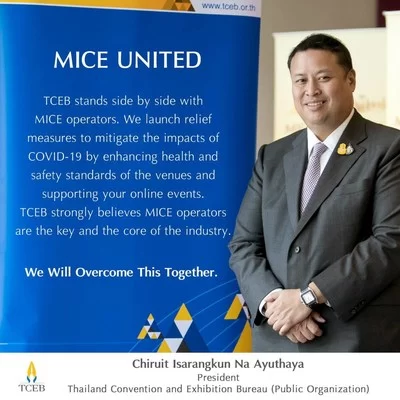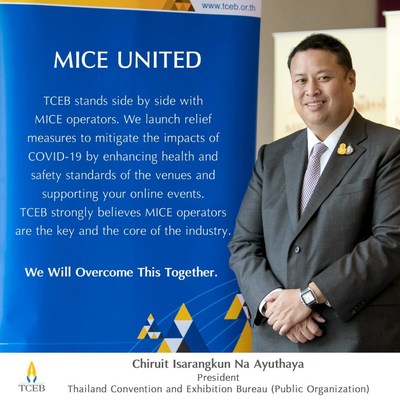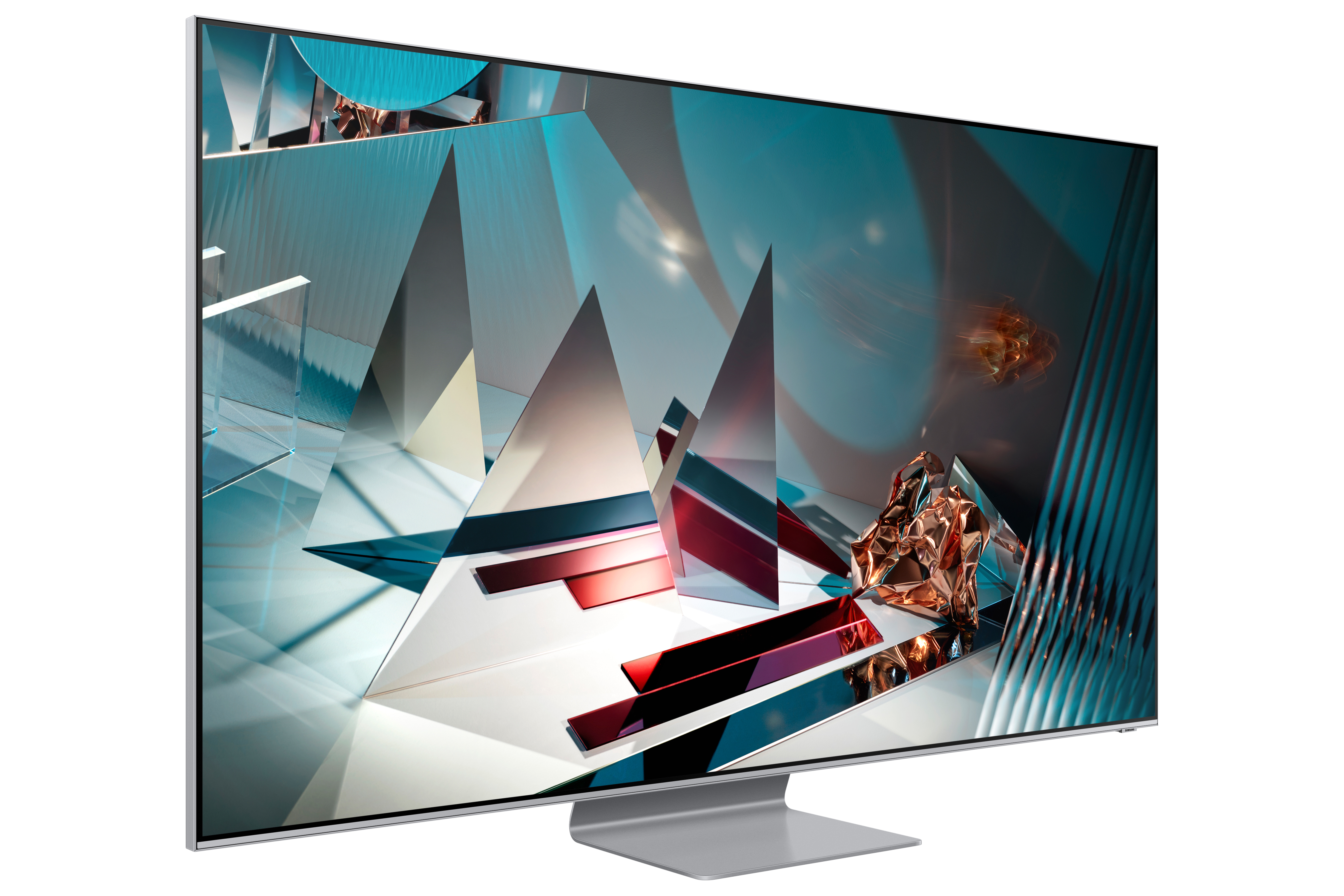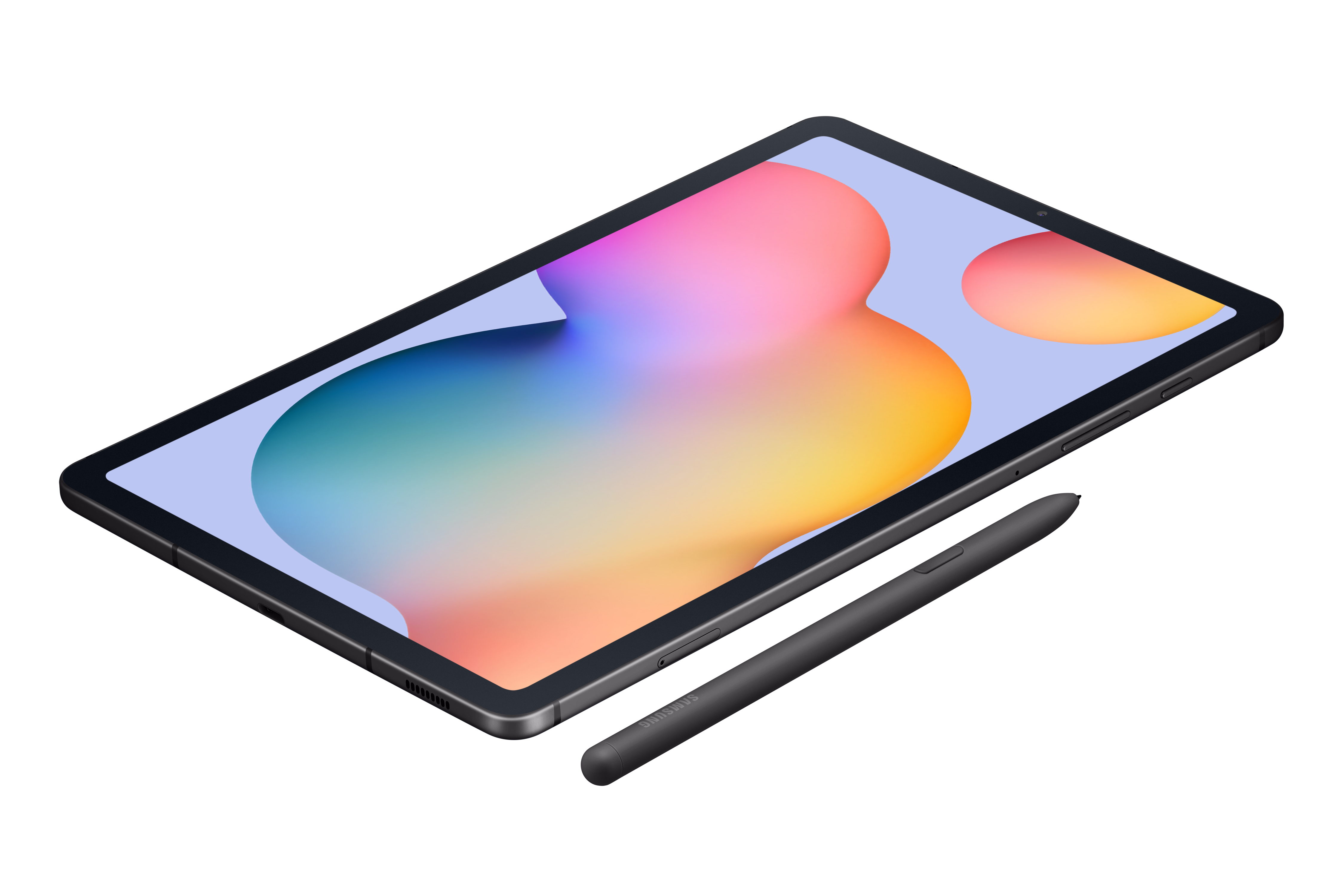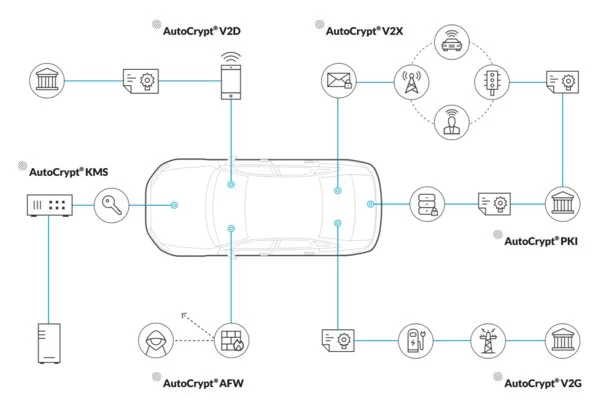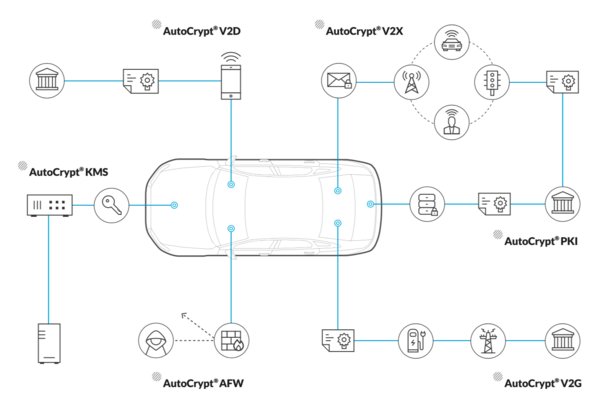BANGKOK, April 20, 2020 /PRNewswire/ — Thailand Convention and Exhibition Bureau or TCEB has announced two projects focusing on digital-based MICE services and health safety standard.
The first called “Virtual Meeting Space” (VMS) will help MICE entrepreneurs run business events online and re-skill their employees via virtual platforms. The second, called “Simple Ways to Prevent the Spread of COVID-19 in Your Meetings and Events”, offers MICE venue owners and operators an incentive to upgrade their safety and health standards. The two projects are in response to the business disruptions brought about by COVID-19 and lockdown measures worldwide.
According to Chiruit Isarangkun Na Ayuthaya, TCEB President, the COVID-19 pandemic has caused the postponement and cancellation of MICE events worldwide. Amidst the tough times, online or virtual platforms have become an alternative for events that can ensure business continuity. Thai entrepreneurs need to adapt to such business platforms. In this respect, TCEB has designed two key projects. The first — “Virtual Meeting Space” (VMS) – is aimed at enabling Thai MICE entrepreneurs to continue operating their business and to re-skill their employees.
Under VMS, TCEB will support three categories of virtual meetings:
- Webinar — TCEB will provide support in the preparation and management of this online platform, including the preparation and set-up of a studio for live streaming, as well as technical co-ordination and system monitoring during live streaming. Organisers can run slide presentations during the session, enable interaction between participants and speakers, or conduct a Q&A or poll. Such sessions can cater up to 10,000 attendees at a time.
- O2O (Offline to Online) — This platform is for trade exhibitions. TCEB will support the arrangement and management of O2O platforms for exhibitors, as well as live streaming” from either a studio or the organiser’s venue. This includes sequencing, production, controlling, system monitoring during live streaming and technical preparation. Exhibitors can showcase their activities, products and services as needed. An online payment system can also be installed to boost sales.
- E-Learning Platform — This is a platform for MICE entrepreneurs to re-skill or up-skill their employees through six learning courses conducted by Southeast Asia Center (SEAC) on its YourNextU platform: 1. Project Management 2. Inter-personal Skills 3. Management 4. Communication 5. Entrepreneurship and 6. Digital. These courses are available to 250 users from May to October 2020. Learners will receive a certificate from TCEB if they complete the course requisites. TCEB welcomes application from all MICE entrepreneurs.
For the second project, “Simple Ways to Prevent the Spread of COVID-19 in Your Meetings and Events”, aims to assist MICE venue operators to upgrade the safety standard of their facilities”. TCEB will provide a 30,000-baht subsidy for each MICE venue to formulate and implement COVID-19 screening and prevention measures as stipulated by the Ministry of Public Health. Examples of these measures include the screening of body temperature before participation, the screening of a delegate’s travel history, the preparation of hand-washing guidelines and supply of alcohol-based sanitisers, and the practice of social distancing. This project aims to equip venues with the enhanced health and safety standards that clients will be demanding.
To be eligible for “Simple Ways to Prevent the Spread of COVID-19 in Your Meetings and Events”, a venue must hold a Thailand MICE Venue Standard (TMVS) certification. Hotel applicants must be members of Thai Hotel Association (THA). With an allocation of 6,480,000 baht, the project run from April to June 2020 and will benefit up to 216 MICE venues nationwide.
“Apart from the two projects, TCEB has set up the TCEB COVID-19 Information Centre to serve the MICE community during this critical period. The centre’s primary role is to monitor, compile and assess information on the pandemic, especially those that impact our MICE industry, and produce the necessary recommendations. The centre’s secondary role is to update industry members on the COVID-19 situation, such as government rules, regulations and announcements, so that they are kept abreast of the latest developments,” said Mr. Chiruit.
![]() View original content to download multimedia:http://www.prnewswire.com/news-releases/tceb-launches-campaign-to-strengthen-mice-entrepreneurs-in-response-to-covid-19-outbreak-301043273.html
View original content to download multimedia:http://www.prnewswire.com/news-releases/tceb-launches-campaign-to-strengthen-mice-entrepreneurs-in-response-to-covid-19-outbreak-301043273.html
